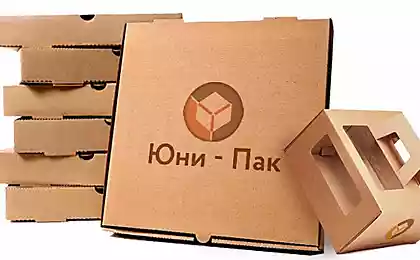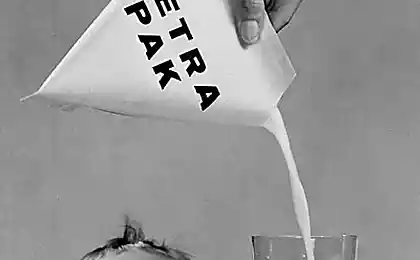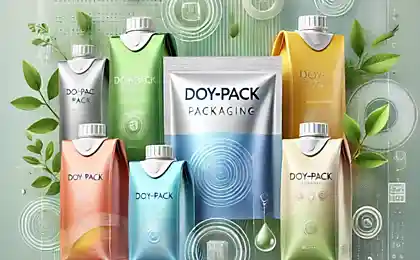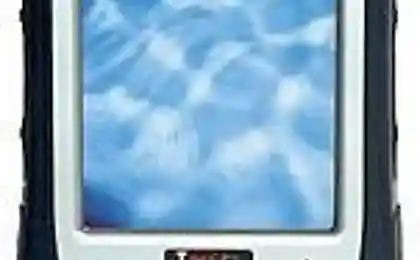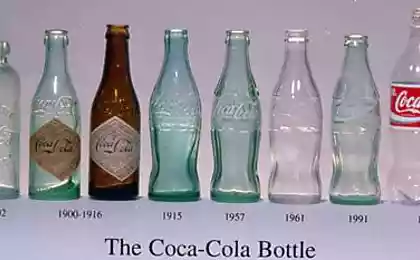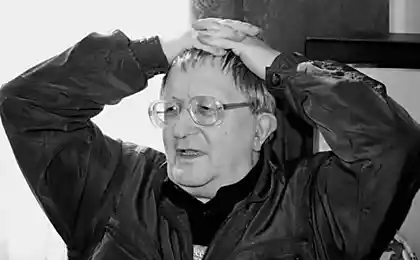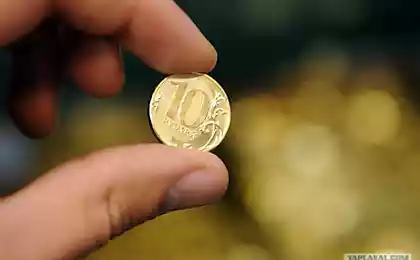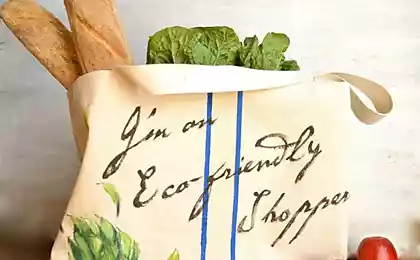793
History of Tetra Classic package
A lot of text, but really interesting.
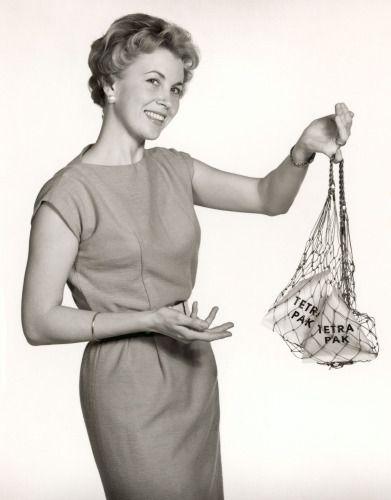
When, as a schoolboy, the author of the material in 1962 first saw this classic is now (by title and in fact) package, I was struck by her form. And much later, working at the company, designs and manufactures packaging equipment, I have admired the "Tetra Classic" from a professional point of view - and then began to search for information about the history of packaging and equipment, to create one. It should be noted that this packaging domestic literature repeatedly mentioned, both in purely special literature and the popular. But, interestingly, the date of the creation of "Tetra Classic" called different: somewhere in 1944, elsewhere years - starting from 1950 and ending with 1954. Surprisingly, all these dates are more or less well-founded. In 1943, the Swedish company "Okerlund and Rausing 'thinking on the creation of fundamentally new packaging made of cardboard for liquid foods, especially milk. Fast enough to create a packaging solution appeared in a regular four-sided pyramid, obtained from the collapsible sleeve packaging material. In such solid geometry pyramid is called a tetrahedron. The following year, the Patent Office received an application of the country offering to accept a new container and a method of producing the invention. Swedish Patent number 131159 was issued not soon enough: February 8, 1951. But it is the priority date of the patent, it is also the date of receipt of the application to the Patent Office, - March 27, 1944 - and should be considered as an officially registered "Happy Birthday" pyramid-packaging for liquid products.
Its author has long called Ruben Rausing, one of the founders of the company. Later became known as the name of the employee and the company - Erik Wallenberg, who is now recognized as the author often. An application for a patent containing schematic flow diagram of the equipment for packet-tetrahedron was sent in August 1944. Sweden during World War II was neutral. In most other countries in Europe, Asia, North America, and if you struggled with the problems of packaging products, is an entirely different kind. For example, almost everywhere there was a deficit for the manufacture of tin cans for canned food, going to the supply of the warring armies. For the first time this scheme in a revised and expanded version was presented to the media May 18, 1951. The first machine for packing cream 100 ml delivered in September 1952. In 1954 he was created a machine for half-liter dose. And then "Tetra Classic" was to conquer the world.
Some Russian sources, talking about how to spread rapidly around the world and filling technology for producing tetrahedron, argue that this time the company "Okerlund and Rausing" and changed its name to "Tetra Pak" that comes from becoming more popular tetrahedron. However, it is not. When the technology for production of package-pyramid and pouring into her products has been worked out in 1946 it was created the model sample, and later, perhaps, and a prototype of the packing machine, and December 20, 1951, Ruben Rausing and Erik Wallenberg registered the company "Tetra Pak" initially as a subsidiary "Okerlund and Rausing". Probably the main reason for quite a long break between the invention of new packaging and successful implement it, even with the quite natural difficulties of creating a new type of equipment, it was the absence of the original substance, firmly connecting the layers of packaging material.
Adhesives, even completely safe in terms of impact on the human body is almost sure to get into the product, often spoiling his taste. And there was in the first half of the 1940s adhesives provide reliable joints cardboard packaging for liquids. For paraffin impregnating paper or paperboard imparts to them impermeability to liquids only until the packaging is not jammed. Kink, fold on its surface - a place possible leaks. Out showed in the application of polymers. The first polymer - polyethylene, initially in liquid form, was synthesized in the late 1930s. The first film of low density polyethylene obtained by extrusion ploskoschelevoy in 1946. It was found that polymers can be coated with other materials to impart properties such as moisture resistance and heat sealability. In the late 1940s - early 1950s began to spread Lamination - coating material is a polymer melt. In the early 1950's the company has developed a new method for the lamination of the packaging material. Since 1956, "Tetra Pak" she began producing laminators, and the company began to produce laminated packaging material.
Triumph
"Tetra Classic" - one of the masterpieces of the package, and there are very few, especially in the category of consumer goods packaging. The simplicity of design in the apparent convenience of this packaging is not easy and the relative technological schemes of packages - the basis of this genius. Meanwhile simplicity achieved many years and - you guessed - hard work. Triumphant spread through the world of this package confirms the genius, and the fact that "Tetra Classic" was the showpiece of the exhibition "Humble Masterpieces" at New York's Museum of Modern Art, it is possible to consider it official recognition. Reasons for the rapid global spread of technology of "Tetra Classic" can be divided into two groups: the production and consumption.
Manufacturing reasons. Automatic forming pyramid-package were guns vertically-linear type, and have relatively small dimensions in length and width, because have an advantage over other devices of similar purpose. Lack of - at high altitude (over 4 meters). But there was nothing to be done: roll sleeve is thick and rigid material on the short track movement impossible. On the other hand, since the machines were continuous and provides a high performance, they were intended for a major manufacturer, the packaging products adapted room and not in the "barn". Machines working on flexible packaging materials, instead of blanks (a cut) packages, as the equipment of similar purpose other manufacturers, such as machines, forming the package "Pure-Pak" or "Blokpak." A package obtained from the web material, ceteris paribus will always be cheaper packages derived from pre-made blanks. Packaging made of cardboard with a plastic layer for liquid products "Pure-Pak" has its origin from the "carton bottle for milk", US patent which was received in 1915. "Blokpak" - packaging for liquid products made of cardboard with a plastic coating, created by the West in 1956 PCL. Later, the company changed the packaging and its name to the "Combibloc." Today, packaging technology owned by "SIG Combibloc».
Lack of packaging "Tetra Classic" for manufacturers remained one - because of its shape was difficult to form a group of consumer packaging, using a shipping container of standard size and construction. Developers "Tetra Pak" offered boxes (baskets) of hexagonal cross-section for placing them in a package. The boxes were constructed so that it is easy to form and transport packing of several boxes. The company offers automated stacking packages into boxes. But that's not all. Empty boxes are placed on the stacking unit and the complete shoot with the proposed manipulator with pneumatic actuator.
At the turn of the century in the process of packaging are increasingly began to apply industrial robots. Naturally, the arm is not a robot, but, in fact, packaging line (automatic call the whole set of equipment - do not dare) "Tetra Pak" was the forerunner of modern robotic lines in the food industry.
"Tetra Pak" offers customers than individual pieces of equipment and packaging facilities, and their complex: new packing material; a new consumer packaging; filling equipment, the image of her; equipment for the group packaging of consumer packages. Later, in 1956, for the aseptic packaging of products consumers were offered not only modernized machines and packaging material with improved barrier properties, and sterilization equipment, to create a company "Alfa Laval" and adapted by "tetrapakovskie" machines AT-500 and AT- 300. The comprehensive offer to customers is seen due to the global popularity of the technology "Tetra Classic" from the producers of liquid products. Consumer causes. But all these things did not bother the end user, the person who drank milk and other products extracted from the package-pyramid. However, without the popularity of dairy tetrahedron the broad masses of the population around the world would not have been his triumphant procession. The reasons for the popularity of "Tetra Classic" in terms of form that no matter how the package was thrown, it will take the same position - will be on the triangular face.
Three points, in this case three corners package always form a plane. The situation is very stable tetrahedron. Packaging -The most low among all the cartons of the same size. The center of mass based packaging "Tetra Classic" is lower than the other packages. Upon partial recovery of the product's center of mass reduces activity than other forms of packaging. Consequently, it is difficult to accidentally knock over a package and thereby throw the contents after opening.
Now designers cartons for liquid products, creating or upgrading packaging, they spend a lot of energy by introducing ingenious rays "roof" packs for a more convenient extraction of products. A "Tetra Classic" in shape - triangular funnel, and the product is poured out of it easily. Packages with a volume of 500 ml easy to manipulate. It is quite conveniently located in the palm of your hand. When a volume of 1000 ml with the manipulation of some difficulties. In addition, when filling the transverse seams "Tetra Classic", for that matter, and subsequent packaging "Tetra Pak", formed below the liquid level. The air in the package does not remain. However, there is another reason for the popularity of this package. Ruben Rausing once expressed a remarkable phrase: "This package saves more than it costs!". Undoubtedly, "Tetra Classic" save more.
To Russia with love
In 1959, the first automatic forming and filling "Tetra Classic" was introduced in the USSR. And since 1962 the Moscow Mechanical Plant. E. Yaroslavsky was the machine issued AP1N working on the same principle and fasuyuschy milk in half-liter dose of the same package as the "tetrapakovsky." Later he came and automatic AP2N for doses of 250 ml. We must honestly admit that it was a "pirated." Moreover, attempts to copy, including the packaging material, have not been successful - the packages leak. It turned out that it is easier to send the first man into space, than to establish the same high-quality production, as "Tetra Pak».
The practice of copying the best examples of foreign technology has been quite common in the Soviet Union. Any worthy item in some way honored the attention of designers of equipment of similar purpose. At best (for domestic designers) case, she understands "screw up" the details and make a mistake in measuring eskizirovalis. In the worst - sketches made with operating machinery, measurements were carried out during scheduled shutdowns. As a result of this work appeared domestic copies of foreign models, once more successful, at least once.
In fairness it should be noted that the technique of "Tetra Pak" was copied not only in our country. Meanwhile, a technical copy protection known one: patents. "Tetra Pak" was the patenting of all its technical solutions in the USSR. All serious solutions, proprietary company "Tetra Pak" in the leading countries have been patented in our country. In 1991 he was created a group of companies of "Tetra Pak" and "Alfa Laval". On January 1, 1993 there is concern "Tetra Laval". Companies included in it, it has a high degree of autonomy, but a series of actions, such as the patenting of technical solutions, carried out on behalf of the group.
Since the beginning of the practice of patenting continuous attempts to copy the technical solutions "Tetra Pak", at least basic, in our country are not observed. And machines that make up the package "Tetra Classic Aseptic," and then the next package, worked in Russia only genuine "tetrapakovskie." Production of the company "Tetra Pak" even under a constant supply of the processing industries of the country as a residual increasingly spread in the USSR in comparison with the packing equipment of other world leaders. One reason for this has been a concern about the supply of population with food essentials, including milk and dairy products. But there was also a "lyrical" reason. The company, for example, one of the first companies to set up joint ventures in Russia. "Tetra Pak-Ray" for the assembly of equipment Podolsk, "Tetra Pak Kuban" for the manufacture of packaging materials Timashevsk were created in the years of perestroika.
The second son of the company founder Hans Rausing, a philologist by training, a person who knows the Russian language and literature, and for many years held the highest leadership positions in the company, he has never hidden his love for Russia. And he could not move this love on the activities of "Tetra Pak" on open spaces of our country. At one time it seemed that "Tetra Classic" irretrievably gone. Meanwhile today, "Tetra Pak" offers machines for filling liquid products in packaging "Tetra Classic Aseptic." Standard volume of packages: 65, 150, 200 ml. In other words, "Tetra Classic" "works" in the section portion packs. And the last word she had not yet told.
A source

When, as a schoolboy, the author of the material in 1962 first saw this classic is now (by title and in fact) package, I was struck by her form. And much later, working at the company, designs and manufactures packaging equipment, I have admired the "Tetra Classic" from a professional point of view - and then began to search for information about the history of packaging and equipment, to create one. It should be noted that this packaging domestic literature repeatedly mentioned, both in purely special literature and the popular. But, interestingly, the date of the creation of "Tetra Classic" called different: somewhere in 1944, elsewhere years - starting from 1950 and ending with 1954. Surprisingly, all these dates are more or less well-founded. In 1943, the Swedish company "Okerlund and Rausing 'thinking on the creation of fundamentally new packaging made of cardboard for liquid foods, especially milk. Fast enough to create a packaging solution appeared in a regular four-sided pyramid, obtained from the collapsible sleeve packaging material. In such solid geometry pyramid is called a tetrahedron. The following year, the Patent Office received an application of the country offering to accept a new container and a method of producing the invention. Swedish Patent number 131159 was issued not soon enough: February 8, 1951. But it is the priority date of the patent, it is also the date of receipt of the application to the Patent Office, - March 27, 1944 - and should be considered as an officially registered "Happy Birthday" pyramid-packaging for liquid products.
Its author has long called Ruben Rausing, one of the founders of the company. Later became known as the name of the employee and the company - Erik Wallenberg, who is now recognized as the author often. An application for a patent containing schematic flow diagram of the equipment for packet-tetrahedron was sent in August 1944. Sweden during World War II was neutral. In most other countries in Europe, Asia, North America, and if you struggled with the problems of packaging products, is an entirely different kind. For example, almost everywhere there was a deficit for the manufacture of tin cans for canned food, going to the supply of the warring armies. For the first time this scheme in a revised and expanded version was presented to the media May 18, 1951. The first machine for packing cream 100 ml delivered in September 1952. In 1954 he was created a machine for half-liter dose. And then "Tetra Classic" was to conquer the world.
Some Russian sources, talking about how to spread rapidly around the world and filling technology for producing tetrahedron, argue that this time the company "Okerlund and Rausing" and changed its name to "Tetra Pak" that comes from becoming more popular tetrahedron. However, it is not. When the technology for production of package-pyramid and pouring into her products has been worked out in 1946 it was created the model sample, and later, perhaps, and a prototype of the packing machine, and December 20, 1951, Ruben Rausing and Erik Wallenberg registered the company "Tetra Pak" initially as a subsidiary "Okerlund and Rausing". Probably the main reason for quite a long break between the invention of new packaging and successful implement it, even with the quite natural difficulties of creating a new type of equipment, it was the absence of the original substance, firmly connecting the layers of packaging material.
Adhesives, even completely safe in terms of impact on the human body is almost sure to get into the product, often spoiling his taste. And there was in the first half of the 1940s adhesives provide reliable joints cardboard packaging for liquids. For paraffin impregnating paper or paperboard imparts to them impermeability to liquids only until the packaging is not jammed. Kink, fold on its surface - a place possible leaks. Out showed in the application of polymers. The first polymer - polyethylene, initially in liquid form, was synthesized in the late 1930s. The first film of low density polyethylene obtained by extrusion ploskoschelevoy in 1946. It was found that polymers can be coated with other materials to impart properties such as moisture resistance and heat sealability. In the late 1940s - early 1950s began to spread Lamination - coating material is a polymer melt. In the early 1950's the company has developed a new method for the lamination of the packaging material. Since 1956, "Tetra Pak" she began producing laminators, and the company began to produce laminated packaging material.
Triumph
"Tetra Classic" - one of the masterpieces of the package, and there are very few, especially in the category of consumer goods packaging. The simplicity of design in the apparent convenience of this packaging is not easy and the relative technological schemes of packages - the basis of this genius. Meanwhile simplicity achieved many years and - you guessed - hard work. Triumphant spread through the world of this package confirms the genius, and the fact that "Tetra Classic" was the showpiece of the exhibition "Humble Masterpieces" at New York's Museum of Modern Art, it is possible to consider it official recognition. Reasons for the rapid global spread of technology of "Tetra Classic" can be divided into two groups: the production and consumption.
Manufacturing reasons. Automatic forming pyramid-package were guns vertically-linear type, and have relatively small dimensions in length and width, because have an advantage over other devices of similar purpose. Lack of - at high altitude (over 4 meters). But there was nothing to be done: roll sleeve is thick and rigid material on the short track movement impossible. On the other hand, since the machines were continuous and provides a high performance, they were intended for a major manufacturer, the packaging products adapted room and not in the "barn". Machines working on flexible packaging materials, instead of blanks (a cut) packages, as the equipment of similar purpose other manufacturers, such as machines, forming the package "Pure-Pak" or "Blokpak." A package obtained from the web material, ceteris paribus will always be cheaper packages derived from pre-made blanks. Packaging made of cardboard with a plastic layer for liquid products "Pure-Pak" has its origin from the "carton bottle for milk", US patent which was received in 1915. "Blokpak" - packaging for liquid products made of cardboard with a plastic coating, created by the West in 1956 PCL. Later, the company changed the packaging and its name to the "Combibloc." Today, packaging technology owned by "SIG Combibloc».
Lack of packaging "Tetra Classic" for manufacturers remained one - because of its shape was difficult to form a group of consumer packaging, using a shipping container of standard size and construction. Developers "Tetra Pak" offered boxes (baskets) of hexagonal cross-section for placing them in a package. The boxes were constructed so that it is easy to form and transport packing of several boxes. The company offers automated stacking packages into boxes. But that's not all. Empty boxes are placed on the stacking unit and the complete shoot with the proposed manipulator with pneumatic actuator.
At the turn of the century in the process of packaging are increasingly began to apply industrial robots. Naturally, the arm is not a robot, but, in fact, packaging line (automatic call the whole set of equipment - do not dare) "Tetra Pak" was the forerunner of modern robotic lines in the food industry.
"Tetra Pak" offers customers than individual pieces of equipment and packaging facilities, and their complex: new packing material; a new consumer packaging; filling equipment, the image of her; equipment for the group packaging of consumer packages. Later, in 1956, for the aseptic packaging of products consumers were offered not only modernized machines and packaging material with improved barrier properties, and sterilization equipment, to create a company "Alfa Laval" and adapted by "tetrapakovskie" machines AT-500 and AT- 300. The comprehensive offer to customers is seen due to the global popularity of the technology "Tetra Classic" from the producers of liquid products. Consumer causes. But all these things did not bother the end user, the person who drank milk and other products extracted from the package-pyramid. However, without the popularity of dairy tetrahedron the broad masses of the population around the world would not have been his triumphant procession. The reasons for the popularity of "Tetra Classic" in terms of form that no matter how the package was thrown, it will take the same position - will be on the triangular face.
Three points, in this case three corners package always form a plane. The situation is very stable tetrahedron. Packaging -The most low among all the cartons of the same size. The center of mass based packaging "Tetra Classic" is lower than the other packages. Upon partial recovery of the product's center of mass reduces activity than other forms of packaging. Consequently, it is difficult to accidentally knock over a package and thereby throw the contents after opening.
Now designers cartons for liquid products, creating or upgrading packaging, they spend a lot of energy by introducing ingenious rays "roof" packs for a more convenient extraction of products. A "Tetra Classic" in shape - triangular funnel, and the product is poured out of it easily. Packages with a volume of 500 ml easy to manipulate. It is quite conveniently located in the palm of your hand. When a volume of 1000 ml with the manipulation of some difficulties. In addition, when filling the transverse seams "Tetra Classic", for that matter, and subsequent packaging "Tetra Pak", formed below the liquid level. The air in the package does not remain. However, there is another reason for the popularity of this package. Ruben Rausing once expressed a remarkable phrase: "This package saves more than it costs!". Undoubtedly, "Tetra Classic" save more.
To Russia with love
In 1959, the first automatic forming and filling "Tetra Classic" was introduced in the USSR. And since 1962 the Moscow Mechanical Plant. E. Yaroslavsky was the machine issued AP1N working on the same principle and fasuyuschy milk in half-liter dose of the same package as the "tetrapakovsky." Later he came and automatic AP2N for doses of 250 ml. We must honestly admit that it was a "pirated." Moreover, attempts to copy, including the packaging material, have not been successful - the packages leak. It turned out that it is easier to send the first man into space, than to establish the same high-quality production, as "Tetra Pak».
The practice of copying the best examples of foreign technology has been quite common in the Soviet Union. Any worthy item in some way honored the attention of designers of equipment of similar purpose. At best (for domestic designers) case, she understands "screw up" the details and make a mistake in measuring eskizirovalis. In the worst - sketches made with operating machinery, measurements were carried out during scheduled shutdowns. As a result of this work appeared domestic copies of foreign models, once more successful, at least once.
In fairness it should be noted that the technique of "Tetra Pak" was copied not only in our country. Meanwhile, a technical copy protection known one: patents. "Tetra Pak" was the patenting of all its technical solutions in the USSR. All serious solutions, proprietary company "Tetra Pak" in the leading countries have been patented in our country. In 1991 he was created a group of companies of "Tetra Pak" and "Alfa Laval". On January 1, 1993 there is concern "Tetra Laval". Companies included in it, it has a high degree of autonomy, but a series of actions, such as the patenting of technical solutions, carried out on behalf of the group.
Since the beginning of the practice of patenting continuous attempts to copy the technical solutions "Tetra Pak", at least basic, in our country are not observed. And machines that make up the package "Tetra Classic Aseptic," and then the next package, worked in Russia only genuine "tetrapakovskie." Production of the company "Tetra Pak" even under a constant supply of the processing industries of the country as a residual increasingly spread in the USSR in comparison with the packing equipment of other world leaders. One reason for this has been a concern about the supply of population with food essentials, including milk and dairy products. But there was also a "lyrical" reason. The company, for example, one of the first companies to set up joint ventures in Russia. "Tetra Pak-Ray" for the assembly of equipment Podolsk, "Tetra Pak Kuban" for the manufacture of packaging materials Timashevsk were created in the years of perestroika.
The second son of the company founder Hans Rausing, a philologist by training, a person who knows the Russian language and literature, and for many years held the highest leadership positions in the company, he has never hidden his love for Russia. And he could not move this love on the activities of "Tetra Pak" on open spaces of our country. At one time it seemed that "Tetra Classic" irretrievably gone. Meanwhile today, "Tetra Pak" offers machines for filling liquid products in packaging "Tetra Classic Aseptic." Standard volume of packages: 65, 150, 200 ml. In other words, "Tetra Classic" "works" in the section portion packs. And the last word she had not yet told.
A source






